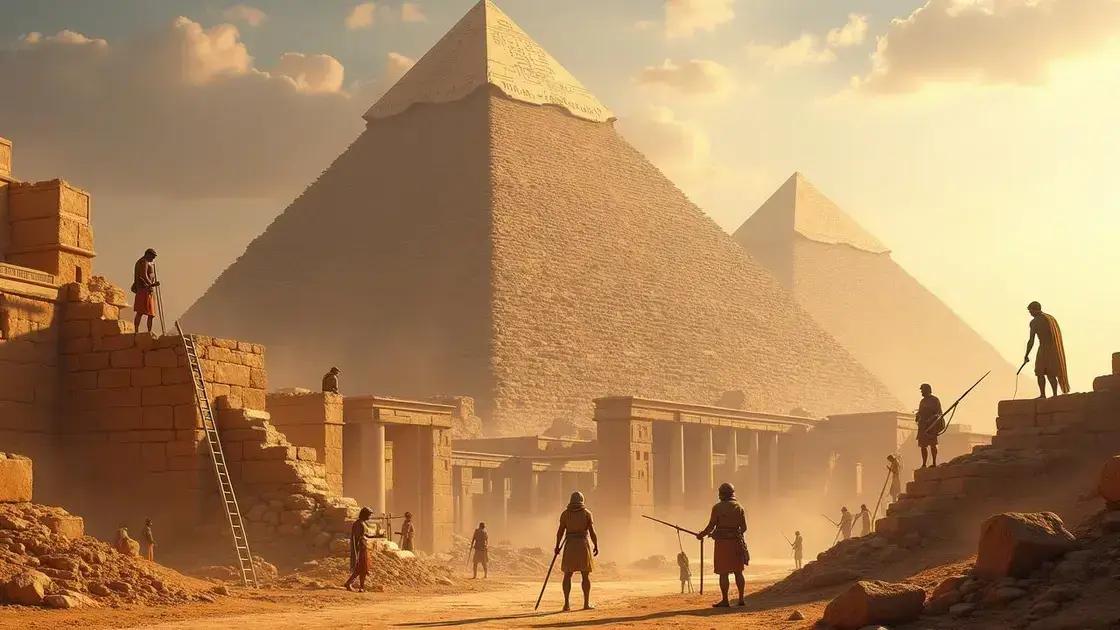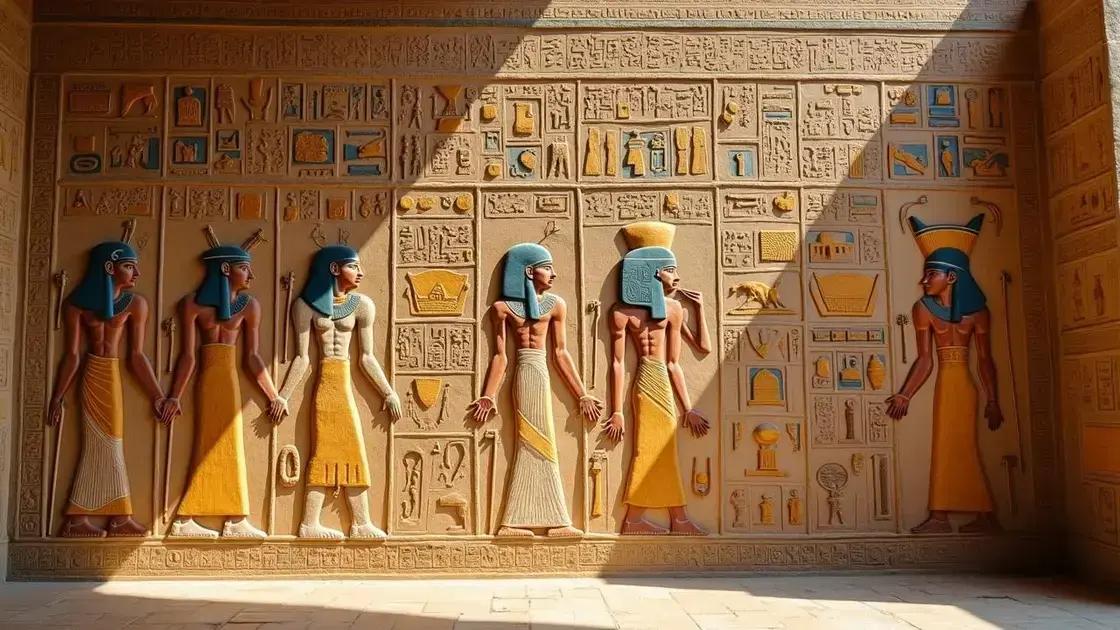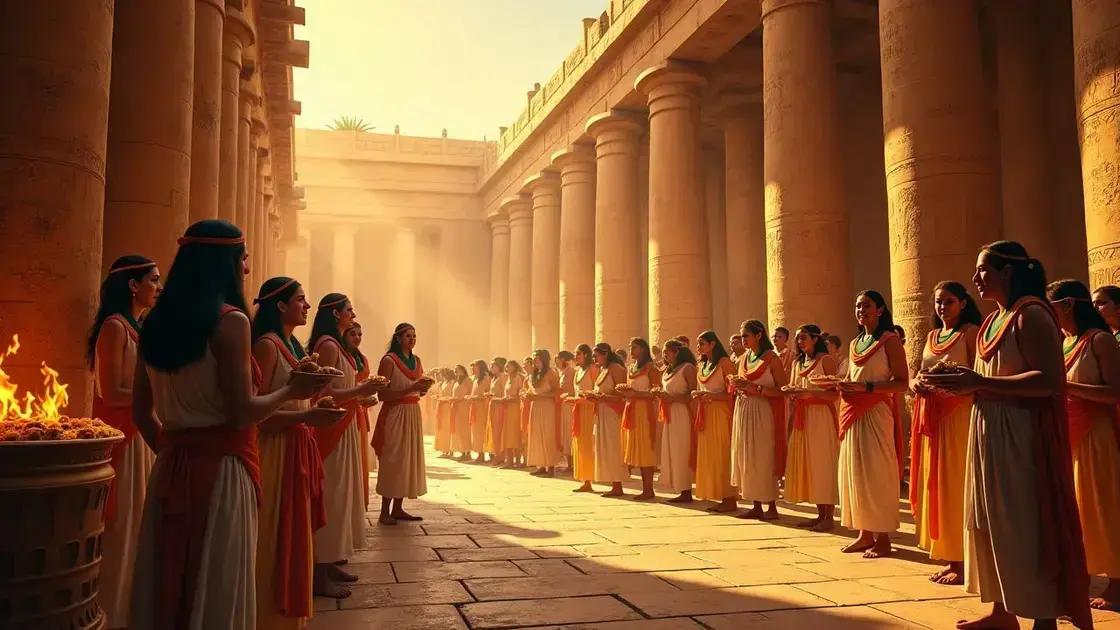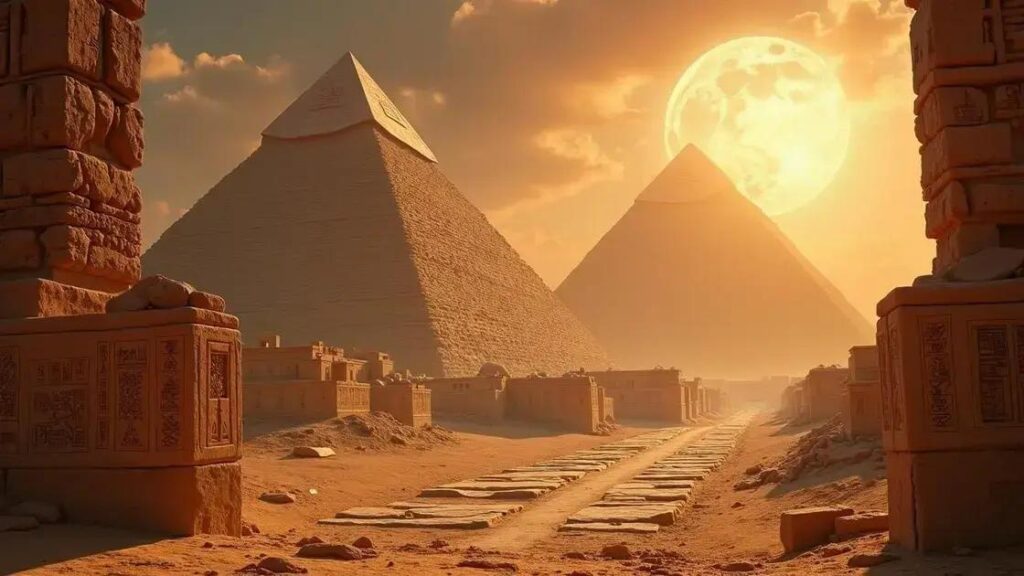The ancient Egyptians were master engineers, creating monumental structures like the pyramids through innovative techniques and precise calculations. Their writing system, hieroglyphs, combined symbols and pictures, allowing for complex communication. Additionally, mystical rituals connected them to their gods and the afterlife, demonstrating a rich cultural heritage that continues to intrigue us today.
What is the Trick of the Egyptians? This question invites us to delve into the incredible mystery and ingenuity of ancient Egypt. From their awe-inspiring pyramids to their sophisticated hieroglyphs, the Egyptians were masters of innovation. In this blog post, we will explore the secrets behind their monumental engineering, decipher the enigmas in their writings, and unveil the mystical rituals that shaped their civilization. Join us as we uncover these ancient techniques and the lasting impact they have on our understanding of history.
The Enigma of Egyptian Engineering

The ancient Egyptians demonstrated remarkable skill in engineering, seen in their majestic pyramids and temples. The Great Pyramid of Giza, for example, stands as a testament to their ingenuity. Built over 4,500 years ago, this structure is an architectural wonder. It was made from over 2 million limestone blocks, some weighing as much as 15 tons!
Innovative Construction Techniques
To achieve such monumental structures, the Egyptians developed advanced construction techniques. They used ramps to move large stones into place, carefully planning the angle and length of these ramps to make lifting easier. Workers likely harnessed the power of the Nile River by transporting stones via boats, which helped them save energy.
Mathematics and Astronomy in Engineering
The Egyptians also relied on mathematics and astronomy to align their structures with precision. For instance, the pyramids are oriented to the cardinal points with impressive accuracy. They employed tools like the merkhet, an ancient sighting tool, to achieve this alignment. Their understanding of geometry allowed them to create stable structures that have withstood the test of time.
The Mystery of the Workforce
Another intriguing aspect of Egyptian engineering is how they organized their workforce. Contrary to popular belief, the pyramids were not built by slaves but rather by skilled laborers. These workers were well-fed and organized into teams to improve efficiency. They worked in rotating shifts, showcasing an early understanding of labor management.
With their incredible engineering methods, the Egyptians not only created impressive monuments but also left a legacy that continues to inspire awe and curiosity today. Their ability to blend art, function, and science remains one of the great enigmas of history.
Secrets of Egyptian Hieroglyphs

Egyptian hieroglyphs are a fascinating writing system that combines pictures and symbols. These symbols represent sounds, ideas, or objects, making hieroglyphs both complex and beautiful. More than 700 symbols were used in ancient Egyptian writing, showcasing the richness of their language.
Understanding the Symbols
Each hieroglyph can convey different meanings depending on its context. Some symbols stand for whole words, while others represent sounds, similar to letters in modern alphabets. For example, the symbol of a bird can denote the sound “b” or symbolize the word “bird”. This allows for creative flexibility in writing.
The Role of Hieroglyphs in Society
Hieroglyphs played a crucial role in ancient Egyptian society. They were often found on monuments, tombs, and temples, serving both decorative and functional purposes. These inscriptions told stories of gods, pharaohs, and significant events, connecting the living with the divine. Moreover, hieroglyphs were vital in recording historical records and ceremonial texts.
The Deciphering of Hieroglyphs
The key to understanding hieroglyphs lay in the discovery of the Rosetta Stone in 1799. This stone featured the same text written in Greek and two other scripts, including hieroglyphs. By comparing the scripts, scholars like Jean-François Champollion were able to unlock the secrets of this ancient language. Today, we can read hieroglyphs and understand the stories they tell.
Through hieroglyphs, we gain insight into the beliefs, culture, and history of ancient Egypt. From tales of gods to the achievements of pharaohs, these symbols have opened a window into a world that continues to intrigue us.
The Mystical Rituals of Ancient Egypt

The mystical rituals of ancient Egypt were deeply connected to their religion and beliefs. These ceremonies often honored their gods and sought to gain favor or protection. A significant component of these rituals included offerings of food, incense, and other valuable items presented at altars or inside temples.
The Role of Priests
Priests played a crucial role in conducting these rituals. They were responsible for performing various rites and maintaining the temples. Only the most dedicated and trained individuals were allowed to serve, and they often followed strict rules. Priests were seen as intermediaries between the gods and the people.
Funeral Rituals
Funeral rituals were among the most important. The ancient Egyptians believed in an afterlife, and proper burial practices were essential for a safe passage. The mummification process preserved the body for eternity. Rituals like the Opening of the Mouth ceremony allowed the deceased to eat, speak, and breathe in the afterlife.
Festivals and Celebrations
Apart from daily rituals, Egyptians held grand festivals to celebrate deities. One such festival was the Wepet-Renpet or New Year Festival, which marked the annual flooding of the Nile. This event brought everything back to life after the dry season. The celebrations involved music, dance, feasting, and ritualistic performances to honor the gods.
Through these mystical rituals, ancient Egyptians maintained a spiritual connection with their beliefs, society, and the eternal world. These practices reflect their values, fears, and hope for the afterlife, showcasing a rich culture that continues to captivate us.
In conclusion, uncovering the secrets of ancient Egyptians
The study of ancient Egypt reveals remarkable insights into their extraordinary engineering feats, linguistic innovation with hieroglyphs, and the profound significance of their mystical rituals. Each aspect showcases a civilization that was not only advanced in technology but also rich in culture and spirituality.
By exploring the enigma of Egyptian engineering, we appreciate their monumental structures that have stood the test of time. Deciphering their hieroglyphs opens a window into the minds of the ancients, sharing stories of their daily lives and beliefs.
Moreover, understanding their rituals gives us a glimpse into their values, showcasing a deep connection to the divine and the afterlife. Together, these elements form a cohesive picture of a fascinating society that continues to inspire awe and curiosity in modern times.
As we learn about the trick of the Egyptians, we not only unveil ancient secrets but also acknowledge the lasting impact they have on our understanding of history and culture.
FAQ – Frequently Asked Questions about the Secrets of Ancient Egypt
What were the main engineering achievements of ancient Egyptians?
Ancient Egyptians are renowned for their monumental structures, such as the pyramids. They mastered techniques like ramp construction and stone transportation to create these wonders.
How were hieroglyphs used in ancient Egyptian society?
Hieroglyphs served as a writing system that combined pictures and symbols. They were used for religious texts, monumental inscriptions, and to record history.
What role did rituals play in ancient Egyptian culture?
Rituals were essential for connecting with the gods and ensuring a favorable afterlife. They included offerings, funerary practices, and grand festivals celebrating deities.
Who performed the rituals in ancient Egypt?
Priests were responsible for conducting rituals. They held significant status and were trained to serve as intermediaries between the gods and the people.
What was the significance of the Rosetta Stone?
The Rosetta Stone was crucial for deciphering hieroglyphs. It featured the same text in Greek and two other scripts, allowing scholars to unlock the meaning behind ancient Egyptian writing.
How did ancient Egyptians view the afterlife?
Ancient Egyptians believed in an afterlife where the deceased would continue to exist. Proper burial practices and rituals were vital for a safe passage to this eternal life.












